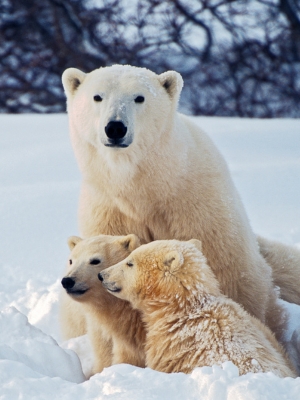This past week, Six Flags Wild Safari in Jackson Township, New Jersey, announced the birth of five Siberian tiger cubs. The safari park veterinarian, Dr. Ken Keiffer, claimed that the birth of these cubs will “help ensure the survival of this precious species for at least two more decades” and “inspire [guests] to help preserve these and other amazing animals here on Earth.”
One of the news articles that announced this event asserted that “the world’s Siberian tiger population just increased by 1 percent.” Another article praised the rarity of the larger litter size, gushing that “most tiger births are only two to four cubs, so hers is notable for its size as well as the species.” Although the latter statements may be numerically true, most of the publicity surrounding the new tiger cubs is grossly misleading; the only survival that this birth ensures are those kept within the confines of captivity.
Captive Tiger Births Are Not a Conservation Win
While it is true that Siberian (or Amur) tigers are one of the tiger subspecies most threatened by extinction, with approximately 350-400 individuals remaining in the wild, the birth of these cubs at a U.S. amusement park will not benefit conservation. They will spend their entire lives on display in New Jersey and will never be introduced into their natural habitat to increase the precariously surviving populations that need protection the most in the Russian Far East and Northeast China.
In fact, zoos have a history of actively contributing to the decline of wild tiger populations. The first range-wide Siberian tiger survey was conducted in the late 1930s. At that time, researchers estimated that only 20-30 individuals remained. This work was critical in enacting a ban on tiger hunting in 1947, following drastic population declines of up to 150 tigers per year due to hunting throughout Russia. However, despite the hunting ban, capture of cubs for zoos continued to limit population growth until restrictions specific to zoos were created. It took Siberian tigers more than 45 years to recover from critically low population levels following this population depletion throughout the early to mid-1900s, with potentially lingering effects still working against recovering tiger populations today.
The International Union for the Conservation of Nature (IUCN) does not list captive breeding as one of the recommended conservation actions for improving tiger conservation status. Instead, the most effective actions include protecting tiger habitats; eradicating poaching and the illegal trade of tigers and their parts; engaging with indigenous and local communities; and increasing the effectiveness of tiger and habitat management. Perhaps, had Six Flags committed to any of the above actions, the 1% increase in the Siberian tiger population would have occurred in the wild, where it really matters; not in a cramped enclosure in New Jersey over 5,000 miles away from their natural range.
The Cubs Are Destined for an Unnatural Life of Confinement
An adult Siberian male tiger’s home range has been documented to reach 772 square miles, while a resident female tiger rearing cubs requires up to 174 square miles in the wild. For comparison, the entire Six Flags Wild Safari Park is just 0.55 square miles — and only a portion of this land is dedicated to the Tigris Asiana section, which is further divided between other animals including Bengal tigers, Nilgai, Yak, and Aoudad. Now, these five precious cubs will endure the gawking stares and frantic pointing of spectators for their entire livesin a theme park, far removed from the natural environment they evolved to inhabit.
How We Talk about Conservation Matters
Although Six Flags describes themselves as “stewards of these endangered cats” on their website, they do little to no meaningful conservation work to save the species. By birthing more tigers in captivity, they perpetuate a harmful cycle of sentencing more tigers to a life of boredom and misery, instead of contributing to legitimate conservation efforts that help preserve wild tiger populations. Six Flags is not the only entity at fault here; the news outlets describing this tiger birth as a win for tiger conservation are empowering this devastatingly futile cycle, which perhaps decreases the resources needed for real conservation efforts in the process of keeping tigers captive at Six Flags. By reporting on the birth of these cubs as a conservation win, media outlets distort the issue for their readers, giving the public the false impression that captivity is useful – even needed – for wildlife conservation when, in truth, captivity serves only to entertain people, not conserve species.
To help us end this obsolete cycle, please consider committing to not support facilities like Six Flags that keep tigers in captivity. We also encourage everyone who is concerned about big cat captivity to push back against arguments that captivity – and captive breeding – play a role in species conservation.
Keep Wildlife in the Wild,
Devan

 Dear Reader,
Dear Reader,